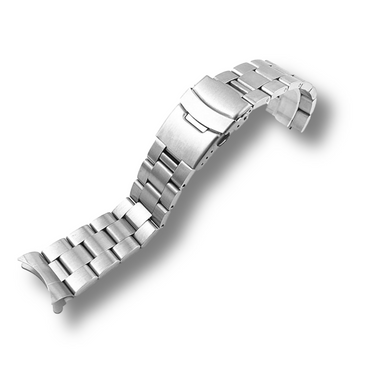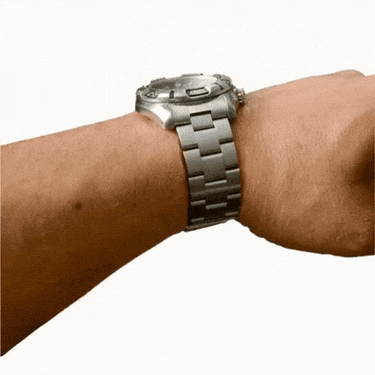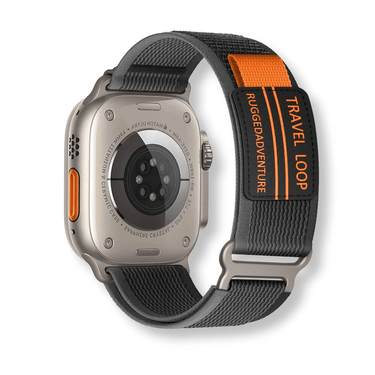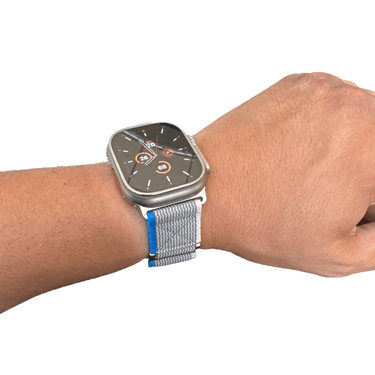Did you know that pilot watches - with their large dials and easily discernible markings - have been around for over a century? Yes, these iconic accessories have a rich history dating back to the early years of the 20th century. In this article, we will revisit the history of the pilot watch - from its early days to its gradual evolution over the years. So read on to learn all about it!
How It All Started - The Creation Of The First Pilot Watch
While pilot watches gained popularity during the world wars, their inception dates back to the early 1900s. At that time, pocket watches were in vogue, and wristwatches with watch bands were absent. Alberto Santos-Dumont, a pilot, then complained to his friend and famous watchmaker Louis Cartier about the challenges of using a pocket watch while controlling the flight.
In response, Cartier developed the first pilot watch, the Cartier Santos, in 1906. Santos-Dumont wore it on all his subsequent flights. The watch garnered attention not only because it was the first pilot watch ever made in history but also because it was possibly the first modern wristwatch too. This was just the beginning of a series of innovations that would create the very popular pilot watches we know today.
The Evolution Of Pilot Watches Over Time
With the advancements in flights, the need for a reliable pilot watch rose further. And following the success of Cartier Santos, other watch manufacturers also endeavored to create a similar one.
In 1909, Louis Bleriot, the first man to fly across the English Channel, achieved this feat while wearing a Zenith watch on his wrist. He continued to be associated with Zenith in the subsequent years and recommended the brand by commenting on how satisfied he was with the watch. Irrespective of whether his words were spontaneous or solely for marketing purposes, they had an immense impact on the popularity of the brand.
Further improvements came during World War I and the following few years. Handling the warplanes was no easy feat, and it became far more complicated with the pilot using pocket watches. The solution was an improved version of a pilot watch. These had large dials with numerals and hands in contrasting colors to make them easier to read.
U.S. Navy officer Philip Van Horn Weems invented the Second Setting Watch that had an adjustable seconds ring. This invention allowed troops to synchronize their watches to the very second, making it possible to launch perfectly coordinated military actions during the war.
In the early 1930s, Charles Lindbergh, a US aviator and a student of Weems, patented a new wristwatch created for pilots - the 'Hour Angle' watch. Pilots could use these watches to determine longitude.
The next innovation in pilot watches came from the German military in the form of the B-Uhr or observer’s watch. These watches were on the larger side, looking more like pocket watches with straps than standard wristwatches. However, they were perfect for the functions they were developed for.
These watches measured 55mm in diameter, which added to the ease of observing the time with a quick glance. It included a large, onion-shaped crown, which made it easier for pilots to grip and manipulate the time while wearing thick gloves. This was especially advantageous for pilots flying in harsh altitudes where it was necessary to wear thick clothing.
The outer edge of the watch was covered with an iron ring to make it anti-magnetic - this protected the watch from any interference caused by radio signals or other equipment. Moreover, the watches could be synchronized by hacking the watch movements. The numerals and hands were designed to be luminescent to allow reading in low light.
And that's not all! There were numerous innovations when it came to pilot watch bands and straps too. The B-Uhr’s strap was made of leather and was double riveted to increase durability. These were longer than standard straps, which made it possible to wear them over thick flight jackets.
More features were added in the years following the war, with more watch manufacturers making an entry into producing this category of watches. The goal was to produce improved designs with better functionality to suit the changing needs of pilots.
Essential Features Of Pilot Watches
Now that we are aware of the history of pilot watches let's take a look into the essential characteristics that set these apart. The main features of pilot wristwatches include the following:
- Readability: Pilot watches need to be easily readable. Therefore, they are usually designed with black or dark-colored dials with contrasting numerals and hands.
- Luminescence: Pilot watches are designed with luminous numerals and hands to improve visibility. This makes it possible for pilots to read the time in the dark.
- Easy manipulation: These watches are designed with large crowns that enable pilots to manipulate the time even when wearing gloves.
- Accuracy: Pilot's watches need to be highly accurate - especially for military use.
- Durability: These watches usually have a rugged design for increased durability. These are designed to be shatter-proof, water-proof, and anti-magnetic.
Which Brands Make Pilot Watches?
Many well-known brands manufacture pilot watches in the present day. Most of these brands sell replacement straps, too, so you can buy watch bands to suit your personal preferences. Some of the common brands include:
- Breitling: The brand introduced its first aviator watch in 1936 and continues to manufacture newer versions today.
- IWC: This brand has been a well-known name in the category of pilot watches since the 1930s.
- Zenith: Zenith’s popularity as a pilot watch brand dates back to 1909, and its reputation remains unchanged even today.
- Rolex: This well-known luxury watch brand has been producing pilot watches since World War II.
- Bell & Ross: Founded in 1992, this comparatively new brand has made a name for producing durable and high-functioning watches.
Summing Up
So, while pilot watches may not be as important for aviators due to the improvements in technology today, these are still considered popular among the general public due to their stylish appearance and high functionality. And with a number of brands offering advanced pilot watches, finding one that appeals to you is likely to be easy.



























